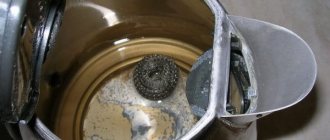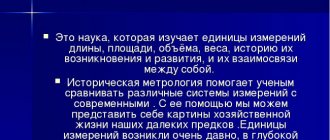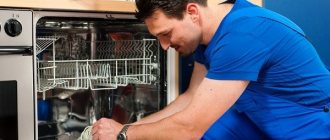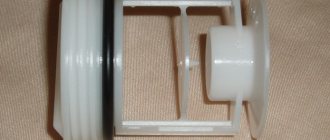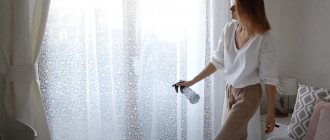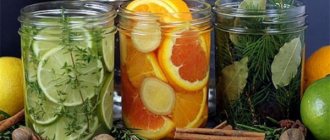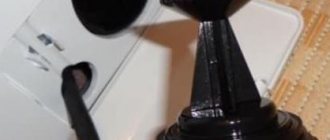An air humidifier is a useful device for maintaining an optimal microclimate in the apartment. It is especially necessary in the cold season, when central heating makes the air in the room dry. When in contact with water during operation, the device becomes dirty and covered with bacterial plaque. To clean your humidifier, you don't have to take it to a workshop. It is quite possible to do this with your own hands. To remove scale and mucus accumulated inside it, both professional and folk remedies are used.
Types of Humidifiers
Manufacturers offer several types of devices to improve the microclimate. The following options can be purchased:
- cold humidification device (produces cold steam);
- hot humidification device (with hot steam);
- ultrasonic humidifiers (an ultrasonic element turns water into dust).
In order for the device to function fully, it needs periodic cleaning.
Cleaning procedure
Scale is a dense mineral deposit that forms on the side surfaces of the tank. To clean a household humidifier from deposits, you need to do the following:
- Turn off the device. Remove the tank from the base and disassemble it into elements.
- Free it from water and rinse.
- Treat the inner surface with a cleaning compound. Use a soft sponge to remove softened scale.
- Wipe the outer part of the body with a flannel soaked in diluted table vinegar (3%).
In ultrasonic humidifiers, you need to clean the membrane surface with a special brush. It is included in the package.
How to descale a humidifier: products and instructions
Timely treatment of the device will help protect it from the formation of a complex plaque crust. To carry out hygienic procedures, it is necessary to disconnect the device from the power supply and allow it to cool completely. The liquid reservoir should be removed, emptied of water and proceed with step-by-step cleaning:
- Removal of dirt is carried out using a soft cloth and a soap solution (100 g of grated laundry soap mixed until smooth with 200 ml of warm water). This product is shaken effectively until foam forms;
- cleaning the tank - a soft cloth is soaked in the prepared solution, after which the liquid container is wiped on both sides. Hard-to-reach areas can be cleaned using a soft-bristled toothbrush. There is no need to put pressure on the brush and rag to avoid scratches that should not be allowed on the device;
- cleaning the nozzle - you need to use vinegar diluted with water in proportions of one to one. A cloth flap easily removes soft scale and dirt;
- rinsing the main elements - upon completion of cleaning, the working parts must be rinsed under running or distilled water.
A clean device is wiped with a soft fiber towel and left until completely dry.
Important! To clean the air humidifier, it is prohibited to use products intended for dishes, bathtubs, and toilets. They contain components that destroy the device
How often should you clean?
Cleaning the unit is an integral part of its operation to extend its service life. The causes of contamination are quite different, it depends on the type of selected specimen and the principle of its operation.
If you use the device regularly, you must wipe it thoroughly and remove salt deposits every week. With timely care, such procedures do not take much time, because scale does not form a thick layer.
What will help against mold, mucus and greens
Such problems can be eliminated by disinfecting the device, which is carried out in three ways:
- Chlorine solution. 1 teaspoon per 4.5 liters of water, the reagent is thoroughly mixed and poured into the tank. The liquid remains in the container for an hour, after which it is drained and washed off well under water;
- Vinegar. A glass of this liquid is poured into water with a volume of 4.5 liters, the solution is placed in the container of the unit, and with this mixture it is in working condition for 1 hour (ultrasonic devices are cleaned when turned off). This process must be carried out in an open space or well-ventilated area;
- Peroxide. 2 glasses are poured into the tank and the liquid remains for an hour. The pharmaceutical preparation should cover the bottom and walls of the device.
These methods will help you effectively get rid of mold, mucus and green growth.
Disinfecting the humidifier
You can prevent the appearance of unfavorable fungi, bacteria and other microorganisms using chlorine-containing products. The most popular bleaches are:
- You need to fill the tank with water and add 1 teaspoon of the product;
- the device remains in this state for one hour;
- at the end of the allotted time, it is thoroughly washed under running water, leaving it in working condition for about 1 hour;
- Afterwards, the tank should be rinsed again, and it is ready for the work process.
Cleaners
To clean the air humidifier from any dirt and scale, you can use both professional and improvised methods.
Professional
When choosing special tools, the following characteristics are taken into account:
- effectiveness against mold fungi and bacteria;
- level of danger for humans and domestic animals;
- scope of application - it is better to choose universal ones.
Advice! Some professional formulations contain silver. Such cleaning products destroy any pathogenic microflora and prevent the spread of viruses. They do not contain fragrances, chlorine, or toxic components that cause irritation to the respiratory tract.
To clean your home humidifier, you can use the following:
- "Silvester" (spray). The device must first be descaled with a sponge, and then the cleaned surface must be treated with the composition. Allow the product to dry naturally, wipe with a dry cloth.
- "SumerSil". Before use, the concentrate is diluted with water in accordance with the instructions.
- "Bacillol AF". Clears scale very quickly. Does not contain formaldehyde or fragrances. The product must not be used for filters. Available in 100 ml bottles with convenient dispensers. To clean the device, simply wipe it with the prepared solution inside the tank. No rinsing is required. It is enough to wipe the walls with a soft sponge.
- "Surfacesafe". Sold in 750 ml bottles. They can clean surfaces made of any materials. It is odorless, contains no hazardous substances, leaves no streaks and removes all microorganisms. Does not destroy rubber, aluminum and acrylic. A two-minute exposure is sufficient for complete disinfection.
- "Surfanios lemon fresh." There are no aldehydes or phenolic compounds in the composition. Approved for cleaning metal, plastic and rubber surfaces. Does not leave stains and does not require rinsing. Removes plaque in 5-7 minutes, prevents the proliferation of mold fungi.
Folk
It is good to clean the walls of the humidifier from a layer of scale using traditional methods. Soft plaque can be easily removed with a sponge and in most cases does not require the use of serious “chemistry”.
The selected product is diluted with water, poured into a tank and left until the resulting scale dissolves. You can use aqueous solutions of vinegar, soda and citric acid.
Vinegar
Lime deposits regularly form on the surface of the humidifier nozzle. It can be cleaned with 9% vinegar.
Attention! You cannot clean with concentrated products, as they can render the nozzle unusable.
Usage diagram:
- Soak a soft cloth in the vinegar solution.
- Wipe the nozzle.
- Fill the humidifier reservoir with water and turn it on.
If you also need to clean the tank itself, then fill it with warm water with the addition of 0.5 tbsp. 9% vinegar, turn on and leave to work for 60 minutes. This will not only remove scale, but also clean the device from mold and microorganisms. The procedure should be carried out outdoors or near a window.
Soda
To clean a humidifier at home, you can use regular baking soda. The procedure is allowed to be performed indoors.
To do this, fill the tank with warm water and dissolve 60 g of soda in it. Stir the solution and activate the device for 1 hour. There will be enough time for the scale to completely remove.
You can clean any parts of the device with baking soda. It also has a disinfecting effect.
Lemon acid
Citric acid will help clean the parts of the device from a dense layer of scale. Mode of application:
- Stir 4 tbsp in 200 ml of warm water. l. acids.
- Pour the resulting solution into the tank.
- Activate the device. Time – 60 min.
Clean the unit using citric acid outdoors. If it is not possible to take the device outside, then it should be placed near an open window and the “spout” should be pointed outward.
Descaling
You can clean the humidifier from scale using special means or using citric acid. Chemical detergents can negatively affect the operation of the humidifier. A poorly rinsed appliance will release chemicals into the air that can cause headaches. Before cleaning the humidifier, refer to the instructions to properly disassemble the device.
All cleaning at home usually comes down to the following steps.
- Disconnect the humidifier from the power supply and remove its components, following the operating instructions for the air conditioning equipment.
- Drain the remaining water from the container and rinse it thoroughly with plenty of water.
- Clean the humidifier nozzle with a soft, damp cloth.
- Use a soft sponge to remove any major scale from the base.
- Clean the membrane of the ultrasonic humidifier with a small brush, which is usually included in the kit.
- Completely remove any remaining limescale using your chosen product. If a chemical is selected, follow its instructions.
You can replace special descaling compounds by preparing a weak vinegar solution at home at the rate of 25 ml per half liter of water. A citric acid solution is suitable as an alternative. Dilute 2-3 sachets of citric acid in a liter of water and turn on the humidifier to work with this solution. Check the result after a few hours. If scale remains, repeat cleaning; if the scale is removed, thoroughly rinse the humidifier container with clean water.
You can clean the working part from dirt with a soft cloth soaked in a vinegar solution. Do not use abrasive products to remove scale, even if the scale has hardened. It's best to prevent this from happening by cleaning your humidifier regularly.
How to disinfect a humidifier?
Disinfecting the humidifier helps destroy pathogenic bacteria. The procedure must be carried out once every 14 days. For disinfection, you do not need to purchase additional compounds; the simple and accessible components available in the house will be sufficient.
White
For 1.1 liters of cool water, take 6 ml of chlorine bleach. Fill the reservoir with the solution and wait 60 minutes. There is enough time for complete disinfection. If you leave the solution longer, it can cause cracking of the tank walls.
Advice! To remove the bleach aroma, fill the humidifier reservoir with clean water and activate it. When steam formation begins, turn off the power to the device and pour out the water. Repeat steps until the bleach smell is completely eliminated.
Hydrogen peroxide
Pour 500 ml of the drug into the reservoir, wait 60 minutes. Then drain the peroxide and rinse the tank with clean water. There is no need to worry that particles of peroxide will remain on its internal surfaces. During evaporation, the remaining composition will disintegrate into oxygen molecules and water.
Table vinegar
Vinegar not only dissolves scale, removes fungi and mucus, but also helps disinfect the device. Dissolve 260 ml of product in 4.5 liters of water. Fill the tank and turn on the device for 1 hour. Cleaning should be done outdoors. After disinfection is completed, discard the liquid. Fill the humidifier tank with clean water. Let it run until steam forms. After this, drain the liquid again.
Prevention and care
Performing preventative cleaning will greatly prevent the appearance of mold and scale. The frequency of preventive measures directly depends on the quality of the water being poured. It is best to clean the humidifier at home weekly using simple steps.
- Dilute dishwashing detergent in warm water.
- Wash the container with the resulting solution using a soft brush.
- Rinse the tank with clean water.
If the humidifier model requires the use of consumables, for example, cartridges and filters, then replace them according to the deadlines specified in the instructions. In the future, in order not to decide how to clean the air humidifier from scale, it is better to take care of the quality of the water used. Ultrasonic models can be cleaned less frequently by filling them with demineralized or distilled water.
Proper operation, timely cleaning and following the manufacturer's recommendations guarantee long-term operation of the humidifier. Timely maintenance of the device will not take much time and effort. The result of this will be a favorable microclimate in the house and reduced cleaning of scale and mold deposits to a minimum.
Pollution prevention
In order for the unit to work for a long time and efficiently, it must be kept clean. To do this you need to follow simple rules:
- Timely care. The device must be disinfected every two weeks. This will prevent the proliferation of pathogenic microorganisms, which then enter the room and are inhaled by humans.
- Descaling. The tank must be cleaned of deposits every week. This will increase the life of the humidifier.
- If the means at hand are not effective and cannot cope with limescale, you must use professional compounds. The chemical components they contain will help clean the humidifier more effectively.
- To reduce scale formation, it is recommended to use filtered or boiled water.
- After turning off the humidifier, be sure to drain any remaining liquid. In stagnant water, the number of pathogenic microflora quickly increases, which then enters the air.
- When filling the tank, take into account the manufacturer's recommendations: it is forbidden to pour too little or too much water. This may cause the device to break down.
- It is necessary to monitor the condition of the parts, especially the membrane and filter. If they wear out, they must be replaced. Otherwise, the device will not work correctly and will eventually fail.
- It is not recommended to use a device with any defects. It's better to replace it with a new one.
Causes of scale and dirt
The formation of scale and plaque inside the humidifier occurs due to impurities contained in the water. Ignoring the advice of manufacturers, most people use tap water to refill the device, without even passing it through a filter first. Tap water contains quite a few salts, minerals and impurities that determine the degree of hardness of the incoming liquid. Using water with high hardness to refill the humidifier increases the rate at which plaque appears.
We suggest you read the material on how to determine water hardness at home.
Deposits inside the humidifier impede its operation, reducing the quality of the microclimate in the house. The high content of salts and minerals in water leads to the formation of scale. In addition, tap water may contain organic substances, which, when accumulated inside, create good conditions for the proliferation of microorganisms. As a result, mold spores may appear which, if released into the air, can cause harm to health.
The use of poor quality water is the main cause of contamination inside the humidifier. It is important to carry out not only cleaning from scale and deposits, but you also need to pay attention to disinfecting the surfaces of the device and measures to properly prevent the appearance of contamination. Follow these recommendations and the benefits of a humidifier will continue to create a favorable microclimate in your home.
